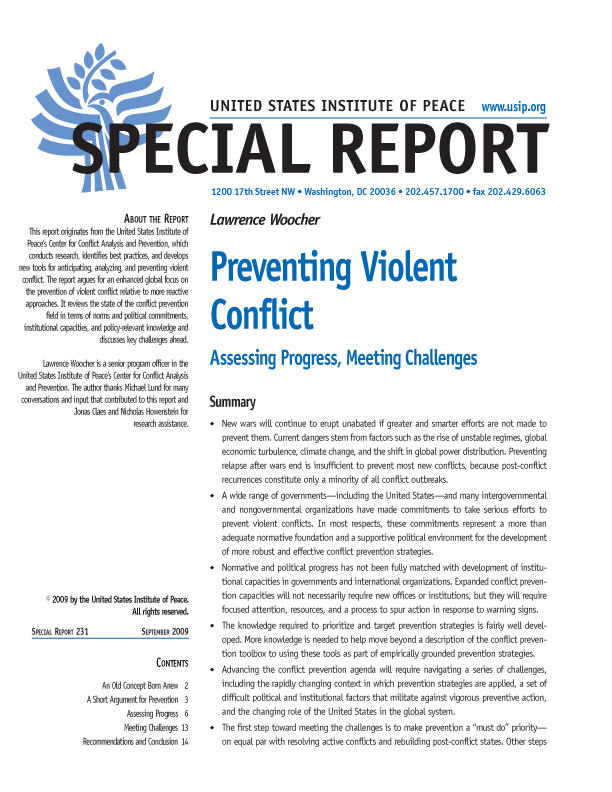How well does the international community work to prevent the outbreak of new wars? In a special report, "Preventing Violent Conflict: Assessing Progress, Meeting Challenges," USIP's Lawrence Woocher examines the current status of conflict prevention as an international norm and argues for enhanced global attention on conflict prevention strategy relative to more reactive responses, such as post-conflict rebuilding and resolving existing conflicts.

Summary
Woocher finds it is not enough to merely prevent a relapse of war; the international community must make a greater effort to respond to warning signs as a way to preempt the eruption of deadly violence. Much attention is focused on reactive approaches to conflict – rebuilding and resolving – but prevention must hold the same level of importance. The report urges that prevention become a “must do” priority, with the same level of importance as resolving current conflicts and rebuilding post-conflict states. Finally, the report recommends ways to advance the conflict prevention agenda amid various international challenges, including monitoring the implementation of political commitments to conflict prevention and developing new strategies to regularize the practice of prevention.
About the Report
This report originates from the United States Institute of Peace’s Center for Conflict Analysis and Prevention, which conducts research, identifies best practices, and develops new tools for anticipating, analyzing, and preventing violent conflict. The report argues for an enhanced global focus on the prevention of violent conflict relative to more reactive approaches. It reviews the state of the conflict prevention field in terms of norms and political commitments, institutional capacities, and policy-relevant knowledge and discusses key challenges ahead.
Lawrence Woocher is a senior program officer in the United States Institute of Peace’s Center for Conflict Analysis and Prevention. The author thanks Michael Lund for many conversations and input that contributed to this report and Jonas Claes and Nicholas Howenstein for research assistance.